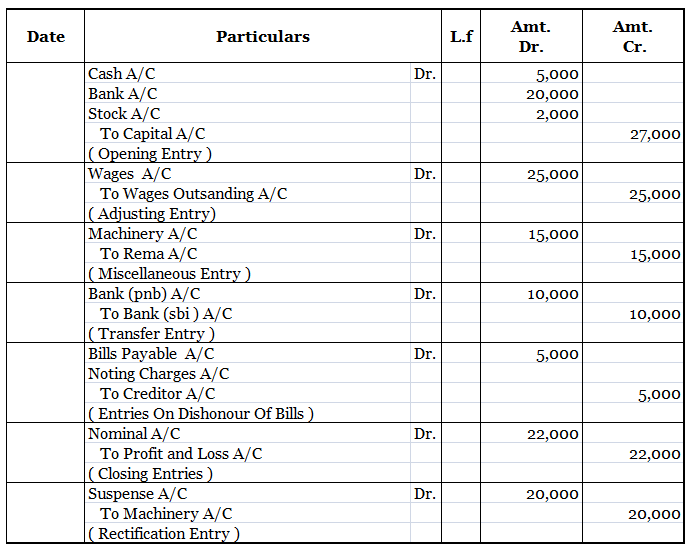Introduction Furniture is treated as a fixed asset of an enterprise unless it deals in the manufacturing or the trade of furniture. As stock in trade, it will be treated as current assets. In both cases, they are real accounts. Hence, the golden rule of accounting will be the same. But, when it coRead more
Introduction
Furniture is treated as a fixed asset of an enterprise unless it deals in the manufacturing or the trade of furniture. As stock in trade, it will be treated as current assets.
In both cases, they are real accounts. Hence, the golden rule of accounting will be the same.
But, when it comes to journal entries, Furniture A/c will appear only when it is treated as a fixed asset.
No journal entries are passed in the stock-in-trade account except for some balance transferring entries.
Journal Entries on taking Furniture as a fixed asset
Taking furniture as a fixed asset, we can pass various entries related to it. Since furniture is an asset, any increase is debited and the decrease is credited.
Also, furniture is a real account which means the golden rule of accounting applicable is, “Debit what comes in and credit what goes out”.
Following are the basic entries related to furniture.
Purchase of furniture
The most common entry related to furniture is the purchase of furniture:
| Furniture A/c Dr. | Amt | |
| To Cash / Bank A/c | Amt |
Here Furniture A/c is increased, hence debited.
Cash or Bank being reduced is credited.
Sale of furniture
| Cash / Bank A/c Dr. | Amt | |
| Profit and Loss A/c * Dr. | Amt | |
| To Furniture A/c | Amt | |
| To Profit and Loss A/c ** | Amt |
*In case of loss
**In case of profit
On the sale of furniture, its balance gets reduced, hence credited.
Cash or Bank is debited as cash comes in hand or into the bank.
Also, profit or loss may arise due to the difference in sale value and the carrying amount of the furniture A/c.
The difference is debited to Profit and Loss A/c in case of loss and credited in case of profit.
Depreciation on Furniture
| Depreciation A/c Dr. | Amt | |
| To Furniture A/c | Amt |
Here, furniture is credited as it is decreased by the amount of depreciation.
Depreciation being a non-cash expense, is debited.
Journal Entries on taking Furniture as stock in trade
When furniture is stock of trade of a business, the journal entries will be like normal purchase and sales entries as below:
| Purchase A/c Dr. | Amt | |
| To Cash / Bank A/c | Amt |
| Cash / Bank A/c Dr. | Amt | |
| To Sales A/c | Amt |
There will be no furniture account.
See less




The journal entry for commission received is as presented below: Cash A/c / Bank A/c / A Personal A/c Dr. - ₹ To Commission received A/c - ₹ (Being ₹ commission received) The commission received means an amount received by a person or entity forRead more
The journal entry for commission received is as presented below:
Cash A/c / Bank A/c / A Personal A/c Dr. – ₹
To Commission received A/c – ₹
(Being ₹ commission received)
The commission received means an amount received by a person or entity for the provision of a service. For example, a firm sold goods worth ₹10,000 of a manufacturer and was paid an amount of ₹1000 in cash as commission. So, the entry in the books of accounts of the firm will be as follows:
Cash A/c Dr. ₹1000
To Commission received A/c ₹1000
Now, let’s understand the logic behind the journal entry through the modern rules of accounting.
Cash account, bank account and personal account are asset accounts. Hence, they are debited when assets are increased.
While the commission received account is an income account. Hence, when income increases, it is credited.
As per the traditional rules i.e. the golden rules of accounting, these are the explanations:
Commission can be received in cash or bank. Hence the Cash or Bank account is debited as they are real accounts.
“Debit what comes in, credit what goes out”
Also, when it is not received but accrued, then a personal account is debited (the person or entity who has received the service but has not paid for it yet). The following rule applies to the personal account.
“Debit the receiver, credit the giver”
Commission received is an income, thus it is a nominal account. It will be credited because of the following rule of nominal accounts:-
“Debit all expense and losses, credit all income and gains”
See less